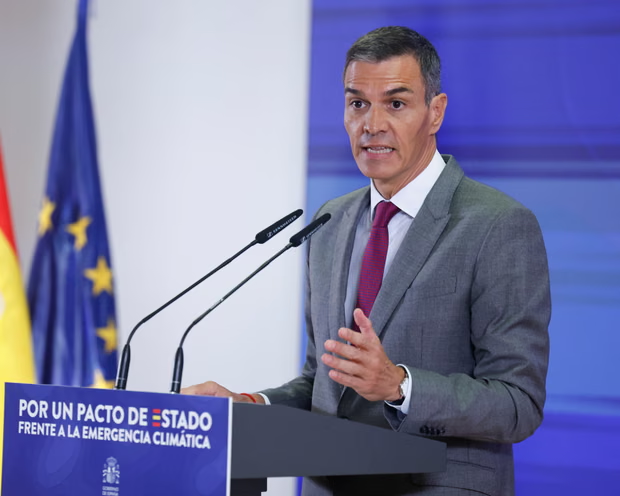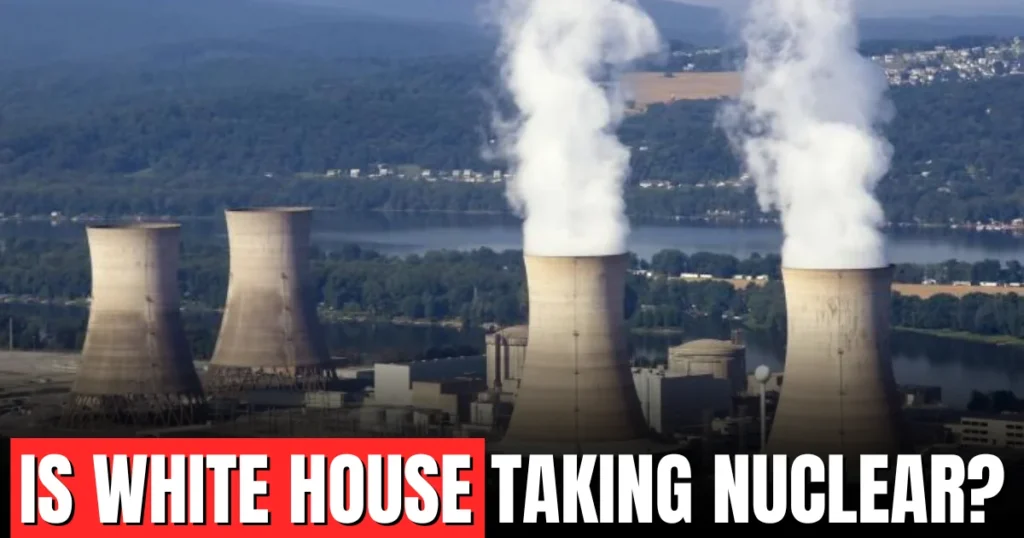Spanish PM Pedro Sánchez launches a 10-point plan to fight climate change after deadly wildfires and €32bn losses. Learn Spain’s strategies, impacts, and global implications.
Table of Contents
Introduction
Spain is on the frontline of the climate crisis — and Prime Minister Pedro Sánchez has issued a stark warning:
“Climate change kills. It kills.”
As Spain battles record-breaking wildfires, deadly floods, and heatwaves, Sánchez unveiled a 10-point national plan designed to fight climate change, protect citizens, and accelerate the green transition.
The announcement comes after August’s devastating heatwave caused wildfires that killed four people, scorched 300,000+ hectares of land, and caused €32 billion in damages. Sánchez called for urgent action, directly criticizing climate change deniers and stressing the need for national unity against a crisis that threatens lives, livelihoods, and ecosystems.
In this blog, we’ll break down Spain’s climate emergency plan, its economic and environmental impacts, and what it means for Europe and the rest of the world.
Why Spain’s Climate Crisis Demands Immediate Action

Spain has become one of Europe’s hardest-hit countries when it comes to global warming impacts. From soaring summer temperatures to flash floods and wildfires, the country faces extreme consequences.
- 🔥 Wildfires → 300,000+ hectares burned in 2025 alone
- 🌡️ Record Heatwaves → August 2025 was Spain’s hottest month on record
- 💧 Water Shortages → Increased droughts threaten agriculture and tourism
- 🌪️ Flooding → Sudden torrential rains destroying infrastructure
- 💸 Financial Losses → €32 billion in damages over the past five years
Sánchez stated:
“If we don’t want to bequeath our children a Spain that’s grey from fire and flames, or brown from floods, then we need a Spain that’s greener.”
This crisis is not just about the environment — it’s also about health, food security, economy, and survival.
Pedro Sánchez’s 10-Point Climate Action Plan
The Spanish government has introduced a comprehensive national strategy to mitigate risks and prepare for climate-related disasters.
1. Establishing a State Civil Protection Agency
A new centralized agency will coordinate emergency responses nationwide, ensuring faster disaster management during wildfires, floods, and droughts.
2. Creating Climate Refuges Across Spain
Safe zones will be set up where vulnerable populations can seek shelter during extreme weather events, particularly heatwaves.
3. Rethinking Forest Management
Spain will invest heavily in reforestation, sustainable grazing, and land-use optimization to reduce combustible materials that fuel wildfires.
4. Strengthening Firefighting Capacity
The plan includes training thousands of new firefighters, deploying advanced firefighting technology, and creating all-season emergency teams.
5. Building Water Resilience
Spain will implement efficient irrigation systems, protect natural water reserves, and invest in desalination plants to safeguard agricultural production.
6. Funding Climate Disaster Preparedness
A dedicated fund will provide financial support for regions hit by climate-related disasters, ensuring rapid recovery and rebuilding efforts.
7. Supporting Sustainable Agriculture
The plan encourages extensive farming, careful grazing, and climate-smart irrigation systems to protect Spain’s food supply chain.
8. Fighting Rural Depopulation
By promoting sustainable rural development, Spain aims to prevent forest abandonment, which contributes to larger, uncontrolled fires.
9. Promoting a Civic Culture of Prevention
Citizens will receive climate education and training to prepare for emergencies and adopt environmentally friendly practices.
10. Accelerating the Green Transition
Spain will expand its renewable energy capacity, cut fossil fuel dependency, and strengthen EU-aligned climate goals.
The Human & Economic Toll of Climate Inaction
Sánchez revealed alarming statistics:
- 20,000+ deaths caused by climate-related events in the past five years.
- €32 billion in financial damages since 2020.
- Tourism & agriculture, two pillars of Spain’s economy, are under severe threat.
The PM stressed that failing to act would make future losses “dangerous and expensive,” potentially overwhelming Spain’s economy and healthcare system.
Climate Change Deniers Under Fire

Sánchez also criticized climate change deniers and misinformation campaigns, particularly on social media:
“The denial coming from an important part of society, spread by some political actors, is incomprehensible and worrying.”
By directly addressing political polarization, the government hopes to create a unified front against climate threats.
Spain’s Role in the Global Climate Battle
Spain’s climate action plan aligns with EU climate policies and the Paris Agreement. As Europe faces an increase in extreme weather events, Spain’s approach could become a model for other nations.
Key global impacts:
- Spain could reduce its carbon emissions by 45% by 2030.
- Renewable energy targets aim for 80% green power generation by 2035.
- Collaboration with the EU will drive cross-border climate strategies.
What’s Next for Spain
The 10-point plan will be approved in cabinet on Tuesday and opened for public consultation. Citizens, environmental experts, and local governments will contribute feedback before nationwide implementation.
This signals a turning point for Spain’s climate policies — prioritizing prevention, sustainability, and resilience over short-term economic gains.
Conclusion
Climate change is no longer a distant threat — it’s here, and it’s deadly. Spain’s government has recognized that inaction is no longer an option.
By investing in prevention, sustainability, and green innovation, Spain is taking bold steps to secure its future. But Sánchez’s warning is also a global one:
If the world doesn’t act now, the next generation will inherit a planet “grey from fire and flames” — a future we must prevent together.
FAQs
1. What is Spain’s 10-point climate action plan?
It’s a national strategy introduced by PM Pedro Sánchez to fight climate change, focusing on wildfire prevention, water resilience, sustainable farming, and green energy.
2. Why is Spain at high risk from climate change?
Spain faces rising temperatures, extreme droughts, wildfires, and floods, making it one of Europe’s most vulnerable nations.
3. How much has climate change cost Spain so far?
In the past five years, Spain suffered €32 billion in economic damages due to climate-related disasters.
4. How will the plan affect farmers?
The government will support sustainable farming, grazing practices, and efficient irrigation to protect agricultural productivity.
5. When will the plan be implemented?
The proposal will be approved in cabinet and put up for public consultation before full-scale execution begins.

